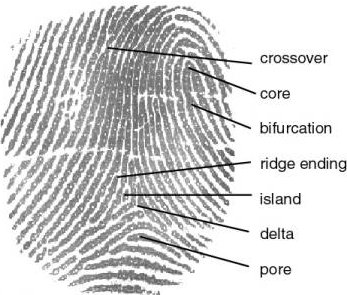Aristotle first noticed the correlation between personality and handwriting over 2000 years ago. However, the field of graphology wasn't closely examined until the 1600s. In 1622, an Italian professor of philosophy at a university published a book on the analysis of handwriting and its character. Then the subject was left for over two centuries, being reexamined once again in 1830 by Abba Michon. He became a headmaster of a school in the late 1800s and wrote a few books on graphology. Alfred Binet called the subject "the science of the future" despite the graphologist's rejection of his research. After World War II, the interest in graphology extended to the rest of the world such as Germany. Max Pulver, a Swiss scientist, was the first to try to 'interpret' graphology in the means of psychological analysis, called psychoanalysis for short. This was soon followed by Ania Teillard who applied his knowledge of typological theories to this study.
- Line quality - free flowing, shaky, or wavering = speed
- Spacing of words and letters- Is the spacing consistent?
- Ratio of the relative height, width, and size- Is the ratio consistent?
- Pen lifts and separations- Does the person stop to form new letters and begin words?
- Connecting strokes- Are capitals connected to lowercase letters and are there connecting strokes between letters and words?
- Beginning and ending strokes- straight or curled, long or short, upstroke or downstroke
- Unusual letter formation- any unsusual letterings?
- Shading or pen pressure- pressure on upstroke or downstroke?
- Slant- left or right, up and down, consistency?
- Baseline habits- the writing above or below a line?
- Flourishes and embellishments- If there are any, what are they?
- Diacritic placement- the crossing of the t's and the dots on the letters
- Blunt starts and stops- the writing doesn't flourish at the end and has blunt ink endings
- Pen lifts and hesitation- gap and overlapping of lines, occasional pen stops in midwriting
- Tremor- the pen is moved so slowly when forging that it's not a smooth line
- Speed and pressure- the pen is moved so slowly that the thickness of the line stays consistent because of the constant pressure placed on it
- Patching- fixed errors in the writing, obvious difference in signature
- Normal Hand Forgery
- When the writer doesn't have a model to go off by, and simply writes the indvidual's name
- Free Hand Forgery
- The writer simulates the signature of the individual by looking off of their true signature. These have a slow, 'drawn' look. matter how well the forgery is written, the ratios of letters and its proportions will not be the same. Even if the forgery is detected, the forger is almost never traced back to.
- Tracing
- transmitted light
- when the genuine signature is placed underneath the paper where it's being forged on, and then held up to a light source (such as a window) and traced
- carbon intermediate
- is used when the object is a thicker object than paper that cannot be traced in the light. The carbon paper is placed on the place where the signature is being forced, and over the carbon paper the original signature is placed. The original signature is then to be traced by a writing utensil and leave a carbon imprint on the object. The carbon can be then traced over once again to create a forged signature.
- pressure indented image
- The original copy of the signature is traced by pen over the paper to leave an imprint, and then traced once again working almost the same way as carbon tracing. This presents a problem because if the forger tries to make it look natural a few characteristics may be missed, but tracing every single part will make it slow and blunt.
- transferred forgery
- If the original signature is written by a ball point pen using ethylene glycol medium (carries dyes and such) then that signature can be lifted by wax paper. The wax paper can then be placed on the paper to be forged on, and then rubbed the ink melts on to the actual paper.
Konrad Kujau's Hitler Diaries...In April 1983 an announcement was made in Germany that 62 handwritten secret diaries of Adolf Hitler had been discovered which was thought to turn out to be one of the most priceless writings ever to be discovered. These were supposedly discovered a few years earlier when an East German came in posession of them after they were recovered from a fallen Nazi plane. The pilot, Lt. General Hans Baur claimed that the plane carried Hitler's archives and it is believable that these are genuine artifact. Some doubt were expressed by the magazine, Stern, in case that it was not authentic and the potential of selling false information to the public.They sent it through graphology experts and it was proven to be a true match. Although the company was ecstatic by this news, some researchers were puzzled by the more 'kind-hearted' nature of Hitler that was presented in this diary, contradicting his public image. After rigorous testing, it was proven that these diaries were indeed forgeries, and the original copy they had based the original testing off of was also forged by the same individuals. The forger was Konrad Kujau, a Hitler enthusiast who was later remembered and recorded in history as the most notorious, elaborate forger of all.
Handwriting Lab
In this lab, we forged each other's handwritings by free hand and tracing. Starr observed my handwriting and said that there are no connection of letters, and the y's and the g's are circular and embellished.
I think she did a great job, the traced one look a lot closer to the original but the letters are darkened and blunt making it seem unnatural.

































